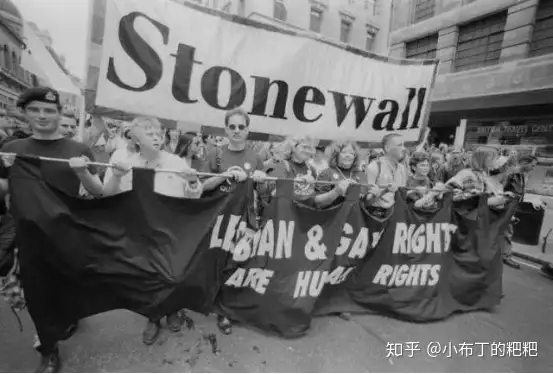The development dilemma of domestic LGBT+ public welfare organizations
In recent years, domestic LGBT+ public welfare organizations have grown rapidly and flourished. The society’s gradual understanding and acceptance of the LGBT+ group cannot be separated from the silent efforts of public welfare people behind the scenes. However, at the same time, due to the objective environment and management such as government management, financial constraints, and personnel loss, Subjective problems such as confusion, unclear goals, lack of supervision and credibility, and cognitive bias within the community have led to the development of these organizations facing more or less difficulties and difficulties.

1. Development advantages of public welfare organizations
In our country, the concept of "public welfare organization" is relatively vague, and it is even difficult to give a clear definition. Titles such as non-governmental organizations, non-profit organizations, charitable organizations, civil organizations, and social organizations are often mixed together, making it difficult to distinguish. It is also difficult to reach consensus.
According to Western scholars, a public welfare organization is a legal, non-governmental, non-profit, non-partisan, non-member organization, self-managed civil voluntary social intermediary organization whose main activities are dedicated to Social welfare undertakings and solving various social problems generally include the four core characteristics of "voluntary, private, non-profit, and autonomous", and their organization should be "bottom-up". However, based on China’s national conditions, many domestic LGBT+-related public welfare organizations have government background support or management. Even if they do not have relevant backgrounds, they will be constrained and influenced by mainstream society, making it difficult to achieve complete autonomy and private ownership. Based on this, the concept of “public welfare organizations” defined in this article is only organizations dedicated to social welfare undertakings and solving various social problems.
If you are a social worker in an LGBT+ public welfare organization, you are probably already aware of the development advantages of public welfare organizations, because in most cases you need to communicate with the civil affairs department, social security department, disease control department, hospital, etc. Institutional cooperation, when writing the "XXX Purchases Social Organization Services" project book or background investigation, it is necessary to mention it at some point. I will not describe it in detail here, but it can be roughly divided into the following four points:
① Service methods: Non-profit organizations have adopted rich and diversified service strategies for the LGBT+ group, which closely meet the actual needs of the community, help reach potential service targets, reduce the community's sense of rejection, and thus carry out various social service work more effectively.
②Organizational form: Public welfare organizations have high flexibility and adaptability, can accurately match the needs of different LGBT+ groups, are easy to establish deep trust relationships and lasting interactive bonds, enhance the cohesion and stability within the community, and effectively enhance The community’s ability to develop itself.
③Service coverage: Many LGBT+ public welfare organizations are spontaneously established by community members. With their in-depth understanding of the community and extensive information network, they can accurately grasp the needs of various target groups (such as different age groups, social habits, educational backgrounds, etc.) Hotspots and gathering scenarios effectively broaden the scope of services.
④Government level: Public welfare organizations can not only fill the government's gaps in LGBT+ services, but also effectively solve the many social problems faced by the community. Especially in the current lack of comprehensive legal protection, they can significantly reduce the government's policy formulation and financial investment. pressure; at the same time, through the promotion and operation of public welfare activities, we can increase the social visibility of sexual minorities, effectively promote social inclusion and acceptance, and contribute to the overall harmony and stability of society.
It is precisely based on the above advantages that my country's LGBT+ public welfare organizations have shown strong growth momentum, gradually moving towards diversified development, becoming increasingly mature in terms of mission positioning, organizational structure, strategic planning, cooperation network and funding sources, and gradually integrating into mainstream society and becoming A civil force that cannot be ignored.
2.The development dilemma of public welfare organizations
Since the reform and opening up, our country has basically determined the relationship between the government, market and society. In 2006, the Central Committee of the Communist Party of China proposed for the first time the "Decision on Several Major Issues Concerning the Construction of a Socialist Harmonious Society," which gave legal status to public welfare organizations registered with the civil affairs department and made it clear that public welfare organizations are an indispensable part of participating in my country's social governance. However, the special status of LGBT+ in the country and its own problems have made it difficult for related public welfare organizations to develop.

(1) Objective questions
① Government intervention and funding shortage: Compared with Western countries, many LGBT+ public welfare organizations in my country have government backgrounds, and their establishment and development often follow a "top-down" path, especially driven by AIDS prevention and control policies. Institutions such as the Center play a guiding or supervisory role in many public welfare organizations, which is also one of the key factors in the rapid growth of such organizations in China. However, this "non-independence" development model has a dual effect: on the one hand, the organization can obtain survival and development resources provided by the government; on the other hand, over-reliance may cause the organization to be restricted by the government, specific policies and management measures in development. Sometimes it creates constraints on organizational operations. In the long run, the relationship between public welfare organizations and government intervention will continue to be intertwined. Although government funds play an important role in LGBT+ organizations, in comparison, policy support and economic investment for such organizations are still insufficient, and social awareness As a result, many organizations are in operating difficulties, and both public welfare and commercial development face huge challenges. This is also the main reason why many organizations are actively exploring multiple sources of funding. In addition, organizations with anarchic backgrounds face a more prominent problem of funding shortages. They need to find funds from limited social resources while taking into account mainstream cultural acceptance. This has led to the short-lived existence of some community organizations with great potential, which is regrettable.
② Poor staff stability: On the one hand, the shortage of funds makes it difficult for LGBT+ public welfare organizations to provide competitive salaries and benefits, and staff often leave due to livelihood problems or are unable to devote themselves to community work; on the other hand, social awareness is low This puts employees under pressure from family and society, exacerbating brain drain. High staff turnover not only affects the stable operation of the organization, but the departure of one person may also lead to a loss of resources.
According to the "Special Research Report on the Security Situation of China's Public Welfare Practitioners in 2015", 56.5% of full-time public welfare practitioners have a monthly income (including total pre-tax income such as wages, bonuses, subsidies, etc.) that is lower than the national average, of which 15.2% have a monthly income The monthly income is less than 2,000 yuan, and 37.3% have a monthly income of less than 3,000 yuan. In terms of social security, 35.1% of public welfare practitioners do not enjoy basic social insurance. According to other reports, the average number of active social workers in Shenzhen was 3,535 in 2014, and 1,622 people resigned that year. The social worker turnover rate was as high as 22.2% (the turnover rate in Beijing, Guangzhou and other places exceeded 25%).
③The quality of talent is uneven, with obvious gaps: Affected by factors such as economic conditions, social and family pressure, the number of staff available for selection by LGBT+ public welfare organizations is very limited, resulting in an unreasonable talent structure, a small total number, and a need to improve overall quality. dilemma. It is difficult for organizations to attract and retain talents with both perseverance and ability to devote themselves to public welfare undertakings. Personnel continuity is poor, and sometimes there is no one to replace the person in charge after he leaves. At the same time, there is a huge gap between staff and volunteers in terms of age, education, social experience, etc., and capacity building is insufficient, making it difficult to reach consensus in the decision-making process.
④ Poor hardware facilities and outdated equipment: Lack of funds has led to the poor office facilities and equipment of LGBT+ public welfare organizations, which cannot provide high-quality services, which affects the impression of community members and hinders the development of follow-up services. Most of the office spaces rented by public welfare organizations are located in residential areas, with small space and poor environment. Surrounding residents have low awareness of them, and their attitudes are generally negative, and even conflicts arise.
⑤ Weak community base: As a minority group, LGBT+ people naturally have a small mass base, resulting in a lack of resources for volunteers, service targets, and supporters. Even within the LGBT+ community, which is a large-scale gay community, the development momentum of its corresponding public welfare organizations is still insufficient. Organizations that serve other sexual minority groups (such as transgender, queer, bisexual, etc.) are even more difficult. Some organizations struggle to survive with only a handful of volunteers (note: although the total number of bisexual individuals may be large, there are relatively few openly visible individuals due to issues of self-identity and social inclusion).

(2) Subjective issues
① Chaotic management: Under the background of government leadership, LGBT+ organizations have limited space for independent development, incomplete internal management systems, and insufficient enforcement of rules and regulations. Lack of collaboration and mutual trust among members due to differences in capabilities. Domestic LGBT+ organization management models can be roughly divided into two categories: one is a "shared responsibility system" similar to the Gay Friends and Family Association, which gives full play to personal expertise, but can easily lead to unbalanced regional development. For example, the Kunming Family and Friends Association has a weak influence, while the Family and Friends Association in Linyi and other places has a weak influence. will develop rapidly; the second is the "leadership system" adopted by most organizations, which facilitates the concentration of efforts on projects and activities, but it is highly dependent on the leader's ability. The rise and fall of the organization is closely related to the strength of the leader. Sometimes the resignation of the leader means the decline of the organization. . In addition, there is also a "hybrid" model, that is, a shared responsibility system under weak leadership, which attempts to integrate the advantages of both, but in practice may amplify the shortcomings of each.
② Vague goals and unclear positioning: Most LGBT+ organizations have clear service targets, such as focusing on transgender people or gay men, but they often neglect the construction of service subjects in operations. The main reason is lack of funds, and sometimes it is also due to organizational development strategy considerations. . Many organizations try to cover AIDS prevention, STD prevention and treatment, legal consultation, social surveys, product sales, gender equality, sexual orientation equality and other fields, striving for comprehensive coverage. Although they can expand the audience of the project, they may lead to scattered focus and poor business quality. In fact, focusing on a specific project may win the favor of funders and enhance the credibility of the organization. For example, Tianjin Deep Blue focuses on AIDS prevention work, and its capital flow and professional capabilities are exemplary in the country.
③Lack of effective supervision: A sound supervision mechanism can help enhance the credibility of the organization, especially in the use of funds, health care services, intermediary services, etc. Taking funding as an example, LGBT+ organizations’ funding sources include government purchase of services, social donations, international projects, etc. Funders expect the funds to be used for community services, so transparent and verifiable supervision is crucial. However, no formal and complete internal and external supervision system has yet been established within the government, society or communities. In order to eliminate doubts about the source of funds, some organizations choose to disclose their accounts, but they often only provide tables that are easy to tamper with and the authenticity is difficult to verify. Establishing a supervision system requires a large investment of manpower and material resources, and many organizations cannot protect themselves, let alone introduce third-party supervision.

④ Lack of credibility: The establishment of credibility involves professionalization, improvement of the supervision system and improvement of public relations capabilities. The establishment process is long and fragile, and it may collapse if you are not careful. LGBT+ organizations lack effective publicity methods and rely mostly on word-of-mouth to attract new members. Improper handling of sexual harassment, unreasonable troubles and other incidents can easily lead to the breakdown of trust relationships.
⑤Cognitive differences: Members and volunteers of LGBT+ organizations tend to be younger, and they are mainly school students. Although this is a positive trend, there is a conflict in concepts between the younger generation and the older generation of volunteers. For example, the older generation values the reproduction of offspring and is sympathetic to same-sex marriage, while young volunteers are disgusted by it; the older generation engages in peer intervention in gay venues and has a more casual attitude towards "sex", and is considered sexual harassment by young volunteers. . Conceptual progress is important, but cognitive differences may lead to "generational" divisions within the organization. In addition, there are also cognitive biases within sexual minority groups. For example, queer people oppose binary gender and sexual orientation, which confuses the gay community and finds it difficult to gain social recognition. Cognitive contradictions such as these are common in the LGBT+ community, posing obstacles to reaching consensus on the basic goals of certain organizations, and even causing divisions.
⑥Lack of motivation: Many LGBT+ organizations were full of vitality in the early days. As projects increased, affairs became cumbersome, and the enthusiasm of public welfare practitioners waned, the organizations entered a stable or bottleneck period. Although the organization is aware of the need to adjust management, strategies, and goals, members are often unwilling to cooperate or respond passively due to issues such as profit distribution and energy investment, resulting in a lack of overall motivation. After new blood joins, it is difficult to quickly grasp the right to speak. Their enthusiasm is wasted and they leave disappointed. The loss of personnel further highlights the problem, forming a vicious circle.
The background and philosophy behind each LGBT+ charity organization are different, and the problems they encounter are also very complex and diverse. The article will inevitably have omissions or one-sided views, but identifying the problem is the basis for solving it. This article only hopes that It can provide some reference for the development of various organizations. I believe that every charity person is constantly working hard to cope with challenges, and I also believe that LGBT+ charity organizations can rise to the challenge and continue to develop and grow in the future~
Source of article: Zhihu A lamp under the same tree
















